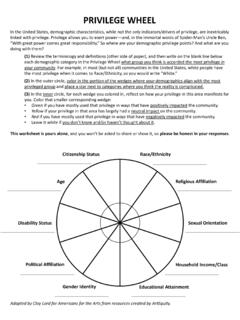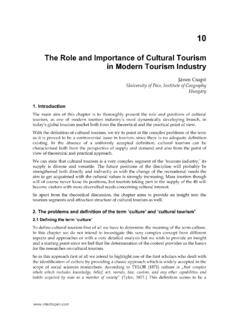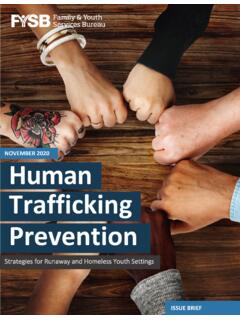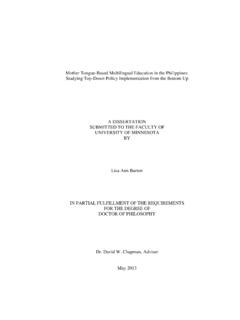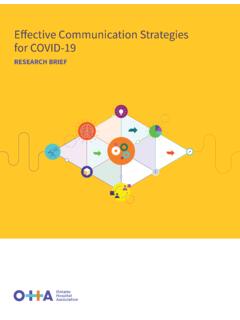Transcription of Why Public Art Matters - Americans for the Arts
1 Americans FOR THE ARTS Public ART NETWORK COUNCIL: GREEN PAPER page 1 Why Public Art Matters Cities gain value through Public art cultural, social, and economic value. Public art is a distinguishing part of our Public history and our evolving culture. It reflects and reveals our society, adds meaning to our cities and uniqueness to our communities. Public art humanizes the built environment and invigorates Public spaces. It provides an intersection between past, present and future, between disciplines, and between ideas. Public art is freely accessible. Cultural Value and Community Identity American cities and towns aspire to be places where people want to live and want to visit.
2 Having a particular community identity, especially in terms of what our towns look like, is becoming even more important in a world where everyplace tends to looks like everyplace else. Places with strong Public art expressions break the trend of blandness and sameness, and give communities a stronger sense of place and identity. When we think about memorable places, we think about their icons consider the St. Louis Arch, the totem poles of Vancouver, the heads at Easter Island. All of these were the work of creative people who captured the spirit and atmosphere of their cultural milieu. Absent Public art, we would be absent our human identities.
3 The Artist as Contributor to Cultural Value Public art brings artists and their creative vision into the civic decision making process. In addition the aesthetic benefits of having works of art in Public places, artists can make valuable contributions when they are included in the mix of planners, engineers, designers, elected officials, and community stakeholders who are involved in planning Public spaces and amenities. Artists bring their own creative skill set to those conversations, which can also inspire creativity in others, ideally bringing the means of decisions and problem-solving to a more responsive and imaginative result. There is a Public art continuum that appreciates the varied creative intentions and roles that artists may bring to a project.
4 Artists may be invited by an official entity, a project may be artist-initiated, or work may take the form of a non-sanctioned artistic endeavor. However, artists inevitably bring personal and distinctive interpretations to each idea, site, social construct, and aesthetic potential. In this way, artists can be social and civic leaders, advocating through art for alternative perspectives that can challenge assumptions, beliefs, and community values. Americans FOR THE ARTS Public ART NETWORK COUNCIL: GREEN PAPER page 2 Social Value and Placemaking Public art is a reflection of its place and time. It acts as a place marker in all human settlements.
5 Artworks like Cloud Gate in Chicago's Millennium Park are intertwined with our images of those cities. Transient artworks, like Christo and Jean Claude's Running Fence in California or the Sultan's Elephant in London, have become memorable moments in time, captured in picture postcards and in family photo albums. Public art activates the imagination and encourages people to pay attention and perceive more deeply the environment they occupy. Public art stimulates learning and thought about art and society, about our interconnected lives, and about the social sphere as a whole. Public art is uniquely accessible and enables people to experience art in the course of daily life, outside of museums or other cultural institutions.
6 Public art provides everyone in the community direct and on-going encounters with art. It engages social interaction both during the selection process and following installation. And, an artwork can lead the viewer toward self-reflection and awareness. Social Value and Collaboration The effort of creating art for Public space is not solitary: the Public art process asks the artist to share his/her creative point of view and approach to art-making, and to collaborate with others throughout its development. In consequence, the work can reverberate throughout the community, thereby encouraging a sense of shared ownership and collective affiliation.
7 The inclusion of artists' thinking, creative input, aesthetic contributions, and problem solving methods in the Public realm engage ways of working in the built environment that are different from the approaches of practitioners of other disciplines because their concerns are different. Economic Value and Regeneration As has been witnessed throughout history, Public art can be an essential element when a municipality wishes to progress economically and to be viable to its current and prospective citizens. Data strongly indicates that cities with an active and dynamic cultural scene are more attractive to individuals and business. Public art can be a key factor in establishing a unique and culturally active place.
8 Public art can create civic icons, but it also can transform our playgrounds, train stations, traffic circles, hospitals, water treatment facilities, and airports into more vibrant expressions of human imagination. By building and reinforcing community culture, Public art can act as a catalyst for community generation or regeneration. In this case, size does not necessarily matter. Public art can be very visible, large, permanent and unmistakable as an art experience; but it can also be very subtle, short lived or seamlessly integrated into one s experience of a place. Public art Matters . Americans FOR THE ARTS Public ART NETWORK COUNCIL: GREEN PAPER page 3 Challenges to the Field of Public Art In order for the field of Public art to stay relevant and thrive in America s rapidly changing environment, we need to actively shape its future and make the case for the value and relevance of Public art.
9 These challenges fall into two complementary and surprisingly uncomplicated questions: what to do (ideas and concepts) and how to do it ( nuts and bolts ). How to do it? Working Together Artists, administrators and curators have so much to learn from one another, and they need to communicate more effectively. There will always be different points of view, but these are strengths and not weaknesses in a field that requires so much collaboration. For administrators and curators, the challenge is to advocate and create opportunities for artists, even while negotiating a minefield of government or institutional beauracracies, regulations, and budgetary and other constraints, as well as community expectations.
10 For artists, the challenge is to understand (and perhaps reconcile) the requirements, restrictions, and callings of the site with his/her ongoing creative inquiry. Open to productive discussion should be issues related to fees for services, insurance procurement, contracts, image submission, selection processes, artist training for Public art, collections management, conservation and other topics of shared interest, with the understanding that standardization may not always be possible or desirable. How to do it? Services to the Field The PAN Council -- a 15 member elected volunteer group of artists and administrators tackle, debate, organize, support, undertake, create, and revise documents and services of benefit to the PAN constituency.

